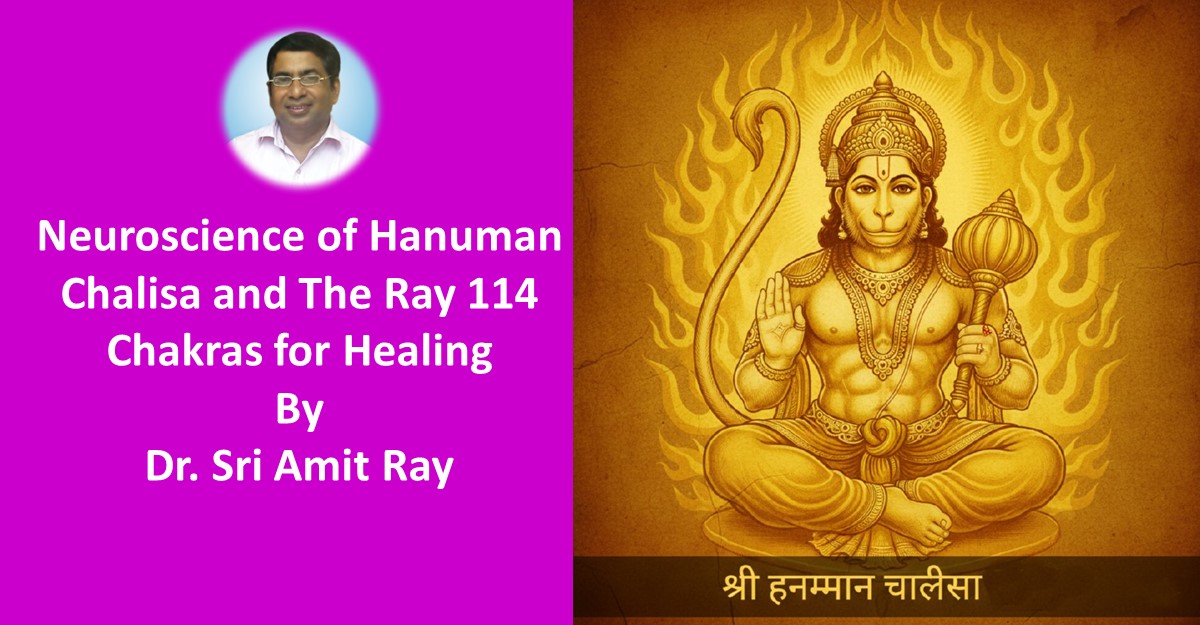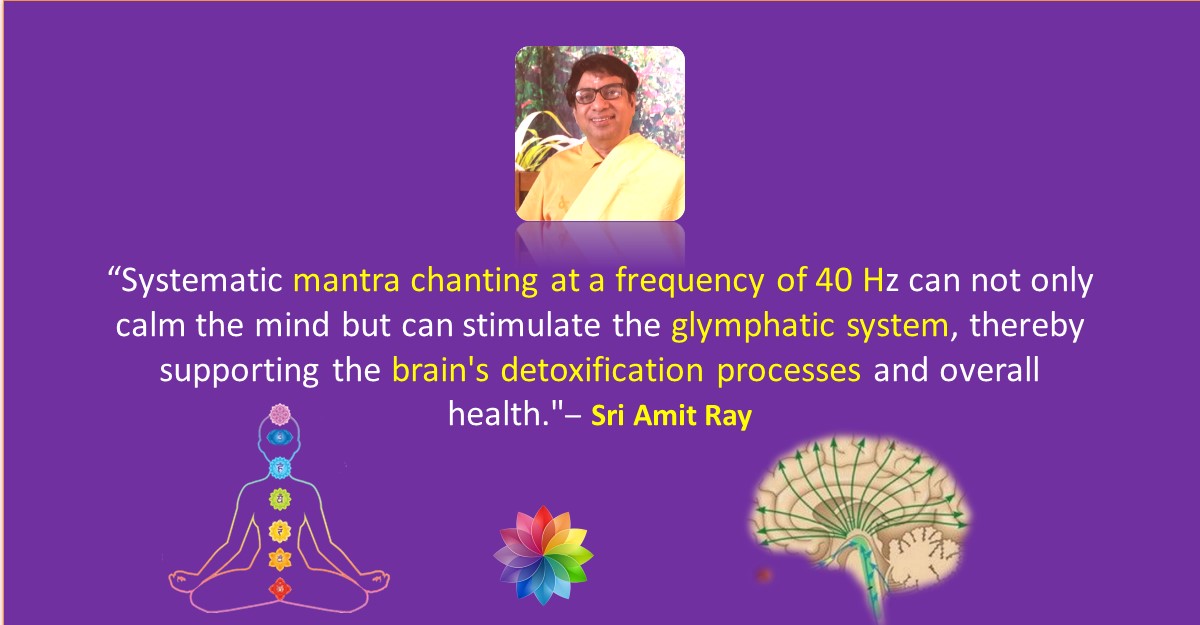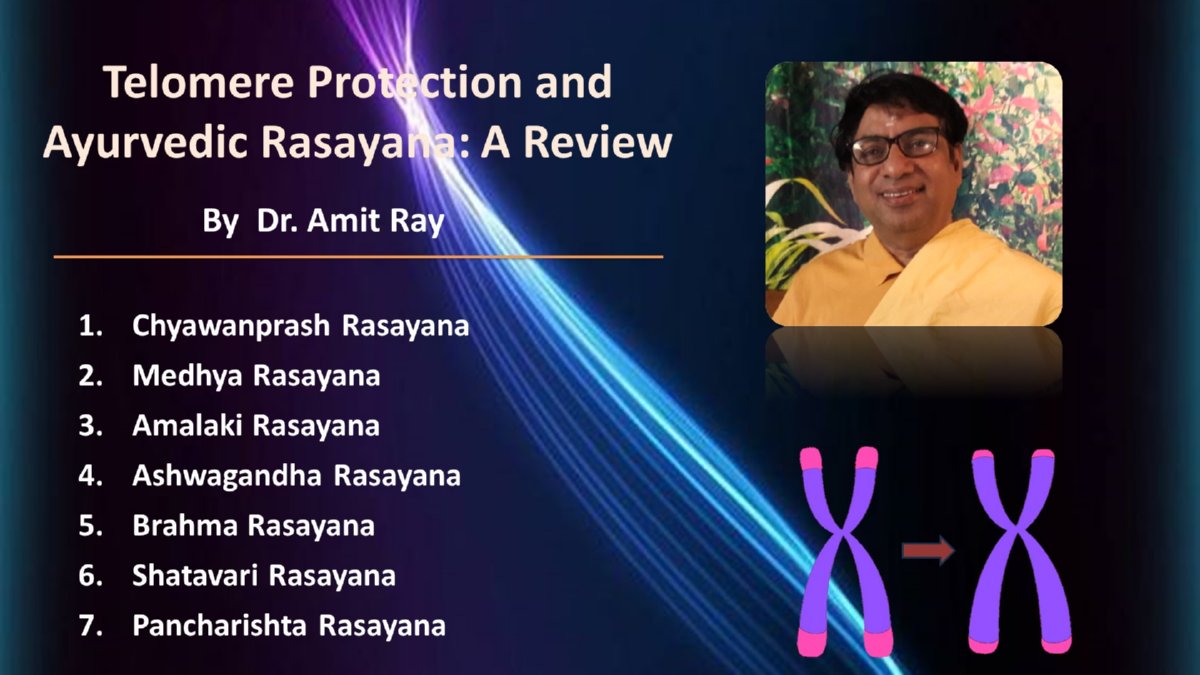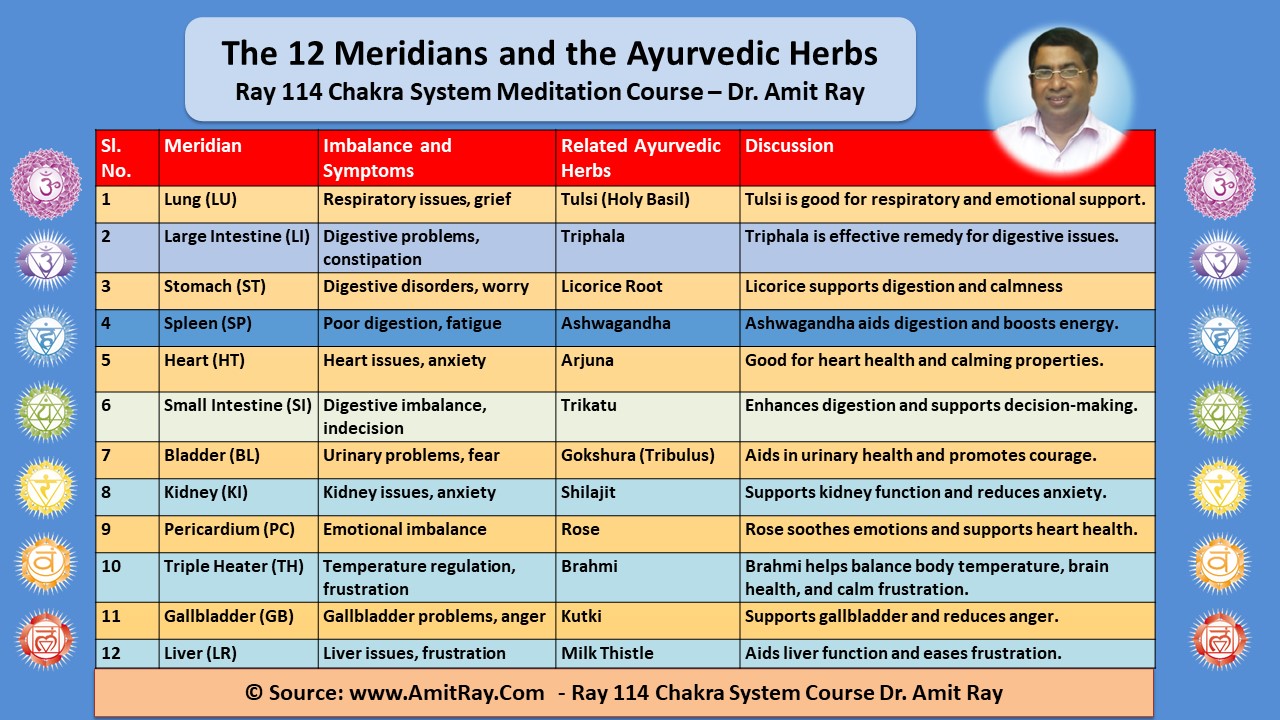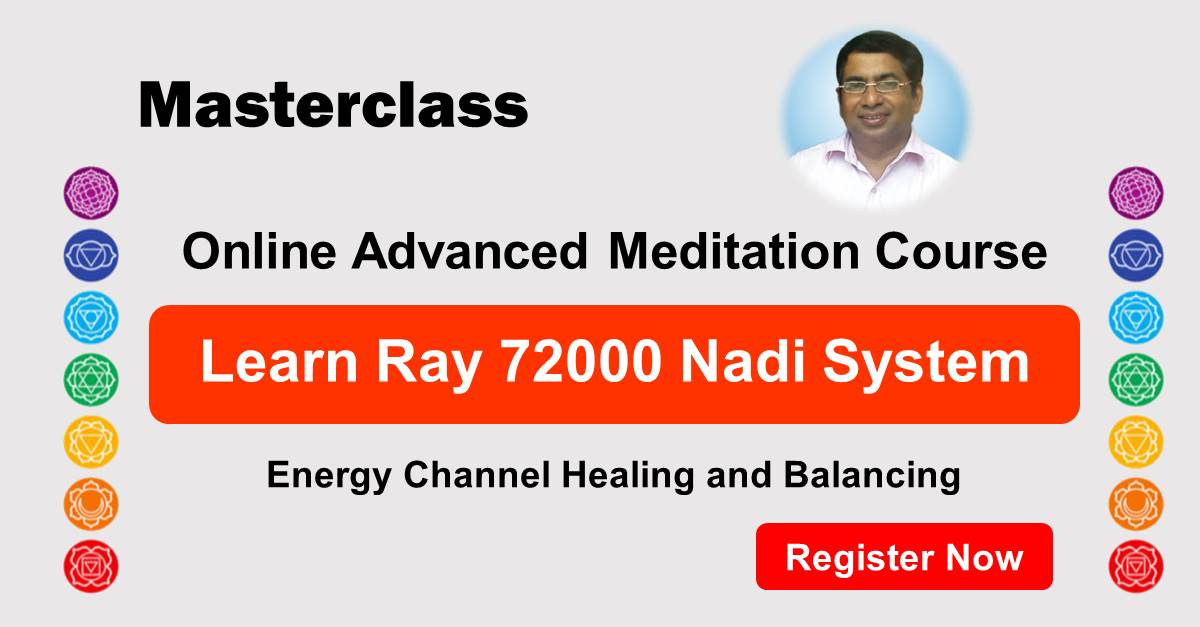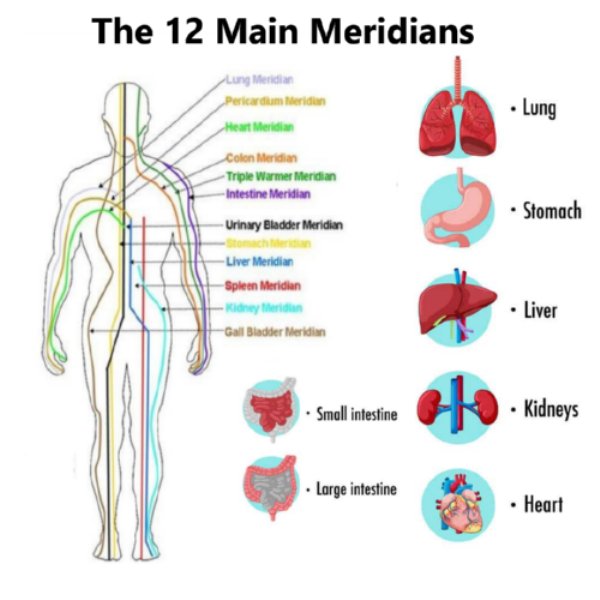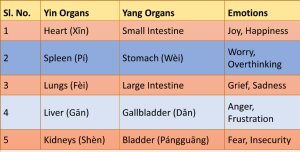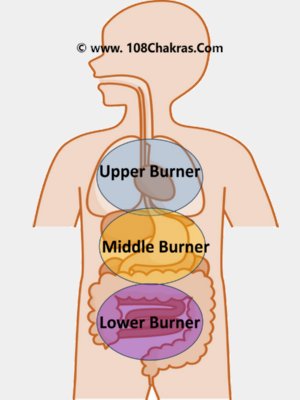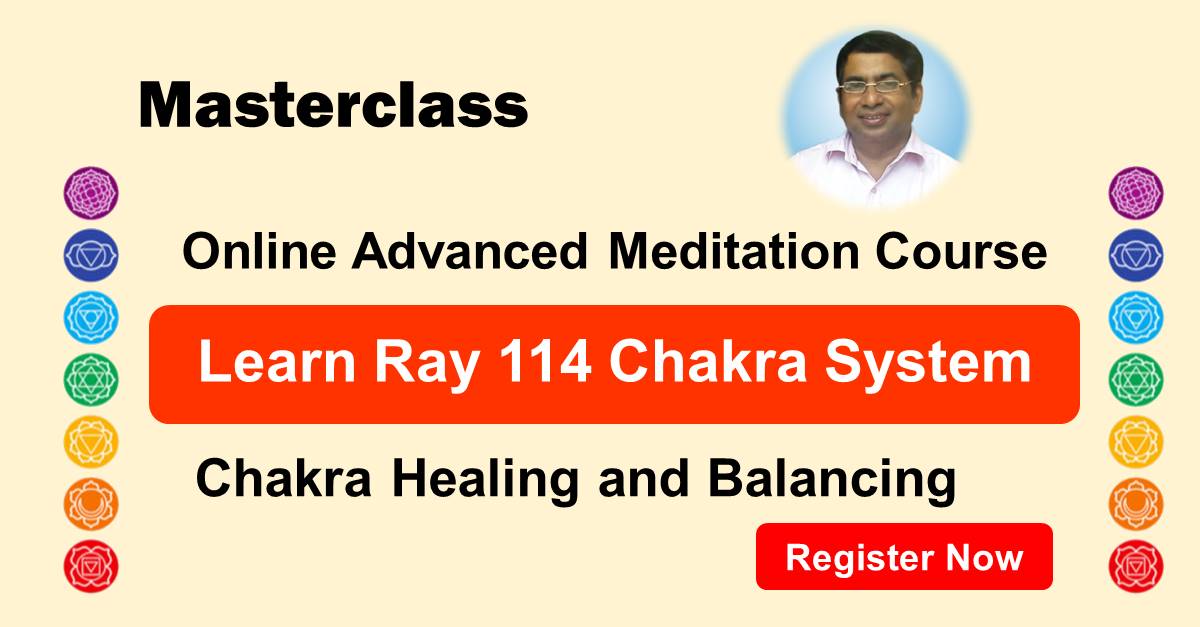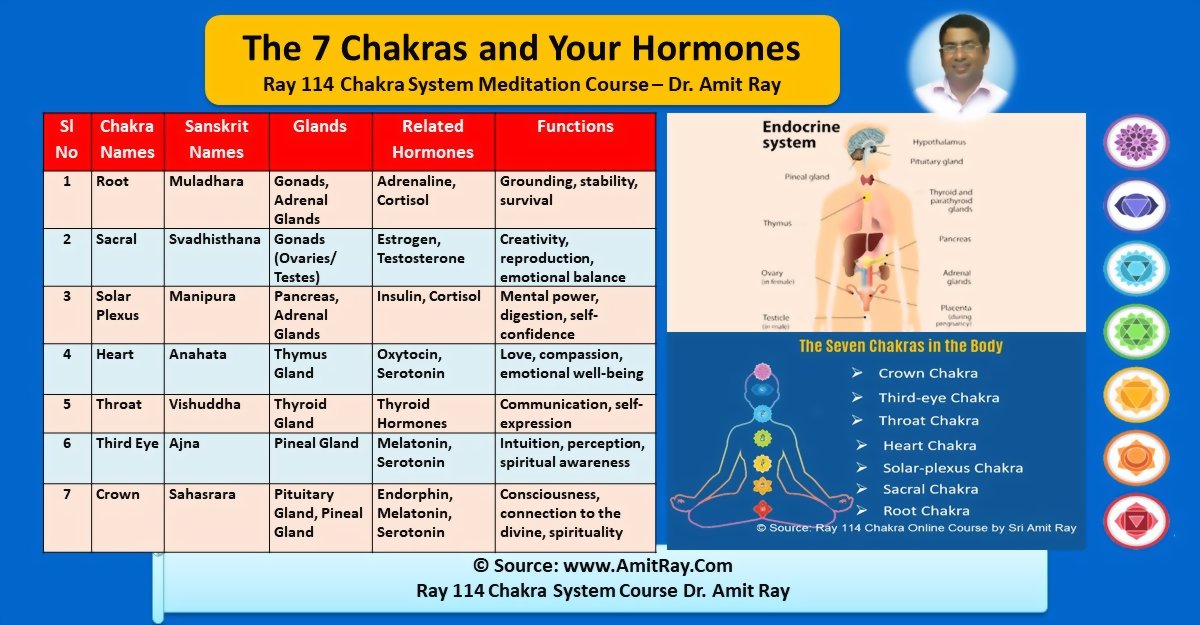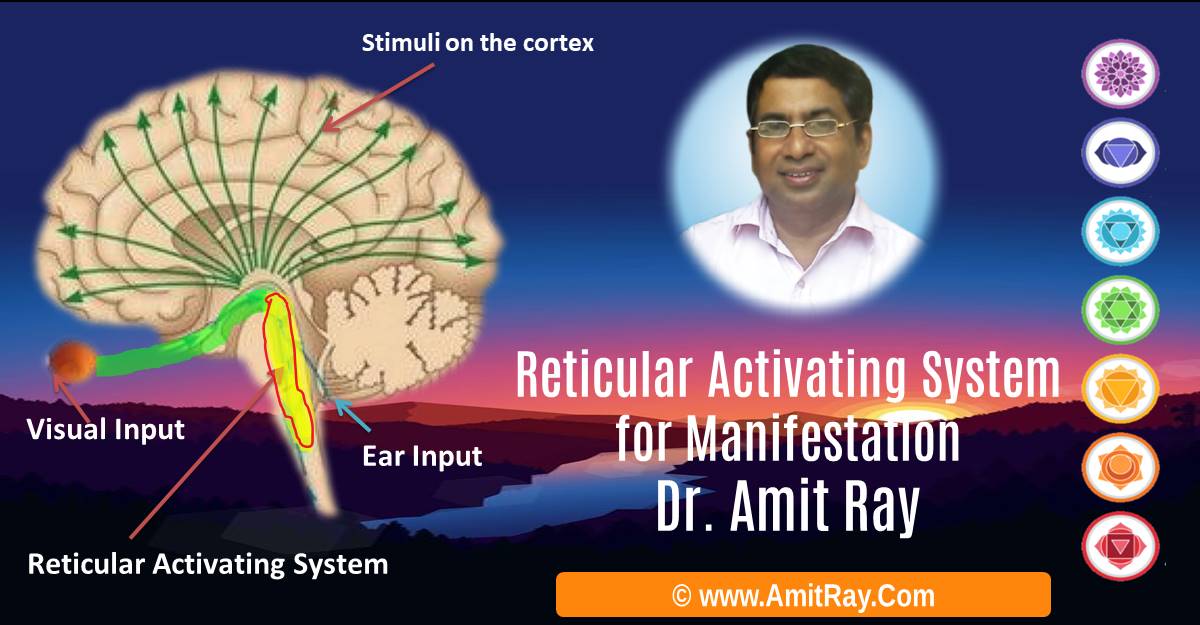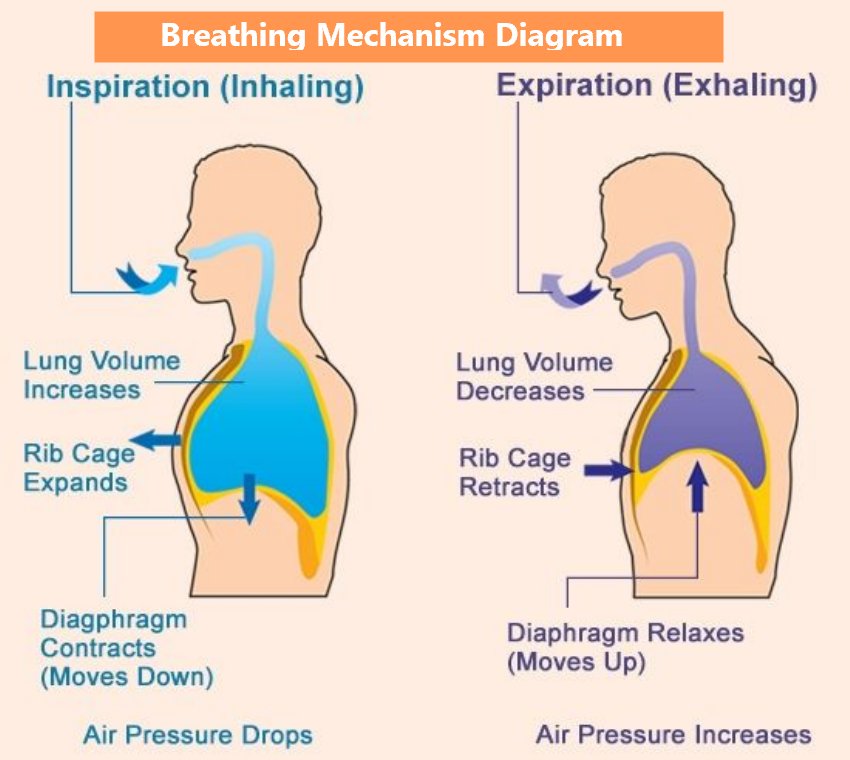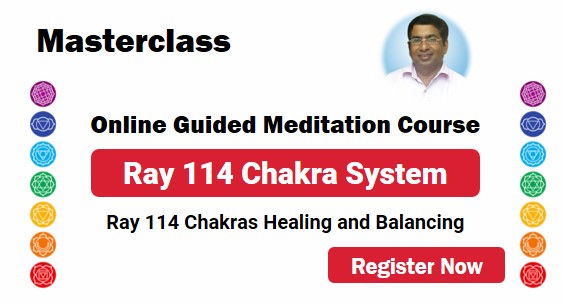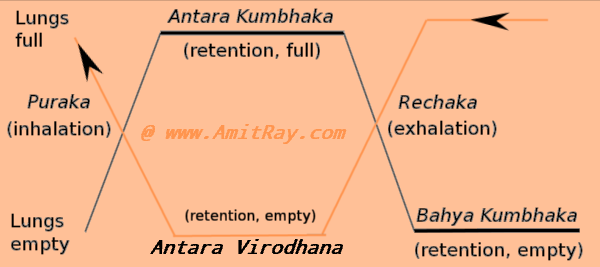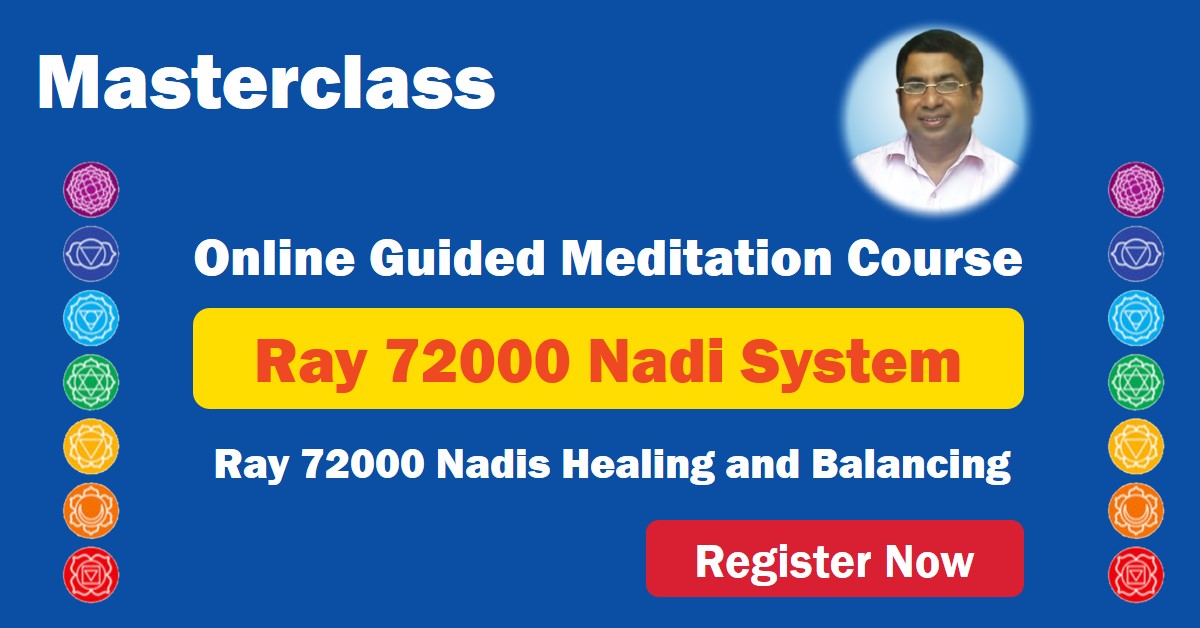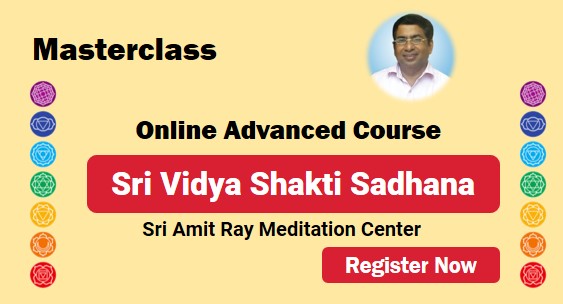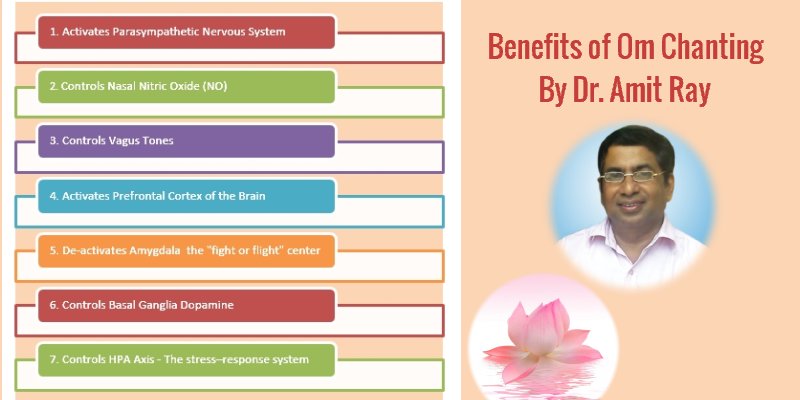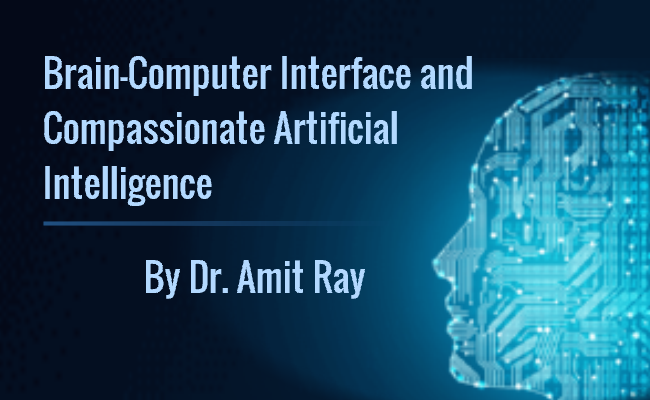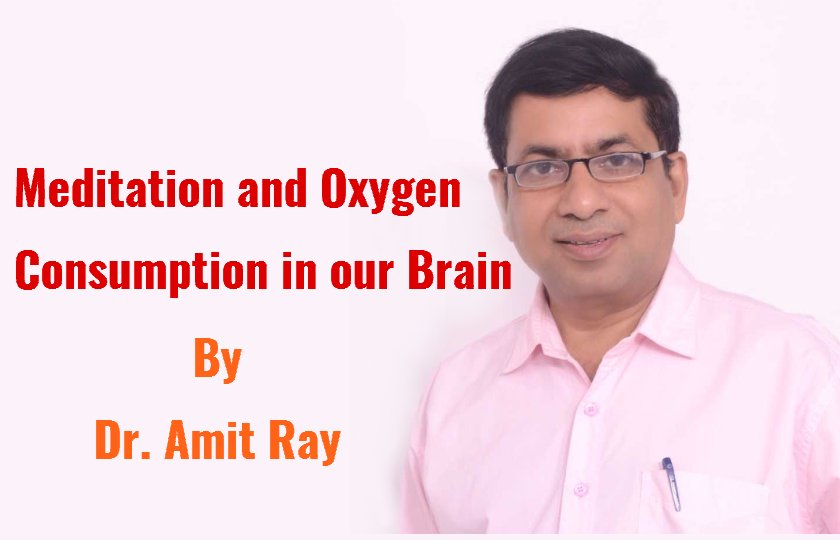Oxygen, the elixir of life, is indispensable for our existence, playing a pivotal role in cellular respiration and energy production. However, recent scientific observations have illuminated a paradox: while oxygen is vital for life, excessive oxygen intake can lead to oxidative stress [1], a condition associated with various diseases.
"With harmony and peace in every inhale and exhale, yoga pranayama whispers the art of reducing oxidative stress and profound well-being." - Sri Amit Ray
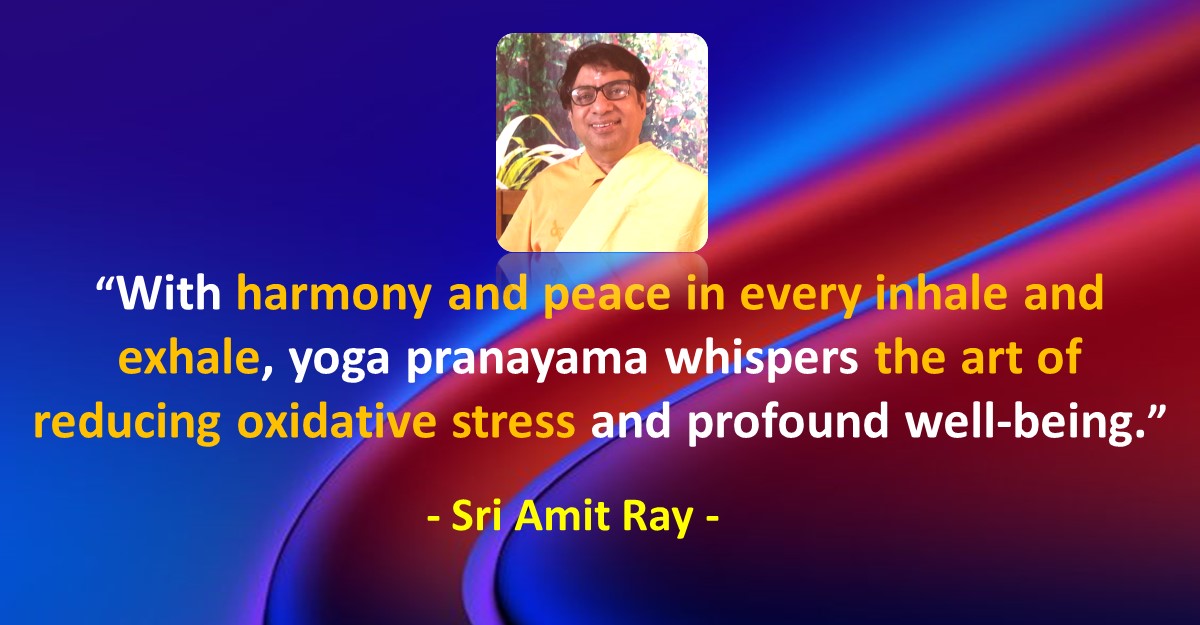
Slow breathing
This realization has prompted a closer examination of ancient breathing practices, particularly resistance pranayama, as a potential remedy for mitigating oxidative stress. Researchers observed that relaxation induced by diaphragmatic breathing boosts the body's antioxidant defense system [2] of the body.
In this article we explore the intricate relationship between oxygen, oxidative stress, and yoga slow breathing exercises. We explore the power of yoga slow breathing exercises, and their benefits for modern health.
Recent breathing research has shown that quick, shallow and unfocused breathing may contribute to a host of problems, including anxiety, depression and high blood pressure. However, by harmonizing the equilibrium of oxygen and other respiratory gases, slow breathing exercises in yoga pranayama may contribute to diminishing oxidative stress and fostering overall well-being.
Oxidative Stress and Diseases
Research has established a strong correlation between oxidative stress and the pathogenesis of various diseases. Reactive oxygen species (ROS) function as crucial signaling molecules, intricately involved in the advancement of inflammatory disorders. Extensive research has underscored the significant correlation between oxidative stress and the development of various diseases.
Even a modest elevation in lung vascular pressure has been shown to activate pro-inflammatory responses and increase ROS production in endothelial cells [3]. This imbalance between ROS production and antioxidant defenses is implicated in the development of conditions such as cancer, asthma, and pulmonary hypertension.
Pranayama and Heart rate variability (HRV)
Heart rate variability (HRV) refers to the variation in the time interval between heartbeats. It is considered a marker of the balance between the sympathetic nervous system (which governs the body's "fight or flight" response) and the parasympathetic nervous system (which governs the body's "rest and digest" response). Higher HRV is generally associated with greater parasympathetic activity and better overall health.
Several studies have demonstrated that regular practice of Pranayama can lead to an increase in HRV indices [3]. This increase is typically interpreted as a reflection of enhanced parasympathetic nervous system tone. Here's how it works:
- Breathing Techniques: Pranayama involves specific breathing techniques, such as deep breathing, alternate nostril breathing, or rhythmic breathing patterns. These techniques often emphasize slow, deep breaths and prolonged exhalation, which can activate the parasympathetic nervous system and induce a relaxation response.
- Vagal Stimulation: The vagus nerve, a major component of the parasympathetic nervous system, plays a key role in regulating heart rate and other autonomic functions. Certain Pranayama techniques, particularly those involving controlled breathing and breath retention, can stimulate the vagus nerve, leading to increased parasympathetic activity and subsequently higher HRV.
- Mind-Body Connection: Pranayama practices are often accompanied by mindful awareness of the breath and the present moment. This mindfulness component can further enhance the relaxation response and promote parasympathetic dominance, contributing to increased HRV.
Overall, the practice of Pranayama offers a powerful tool for improving heart rate variability and promoting overall well-being by balancing the autonomic nervous system towards a state of relaxation and calmness.
Pranayama and Oxidative Stress
The ancient practice of pranayama, a component of yoga, involves conscious control and regulation of breath. Resistance pranayama, in particular, is gaining attention as a potential tool to reduce oxidative stress. By manipulating the breath, these exercises aim to restore balance to the respiratory gases, potentially mitigating the harmful effects of excessive oxygen intake.
Pranayama techniques, including deep breathing, alternate nostril breathing (Nadi Shodhana), Ujjayi breathing, Kapalbhati, and Bhramari, offer diverse approaches to breath control. The rhythmic and intentional nature of these practices is believed to not only enhance lung capacity and oxygen utilization but also promote relaxation and mental well-being.
Respiratory Rate and Heart Rate
Both respiratory rate (breaths per minute) and heart rate (pulse beats per minute) are essential vital signs measured in yoga context. Adults typically take 12-20 breaths per minute, while children tend to breathe faster.
The normal pulse for healthy adults ranges from 60 to 100 beats per minute. During physical activity or stress, both respiratory rate and heart rate tend to increase.
However, during yoga relaxation breathing or 114 chakras meditative practices, respiratory rate might decrease while heart rate remains stable or decreases slightly. Moreover, meditation can reduce oxyzen consumption requirements of the brain.
In yoga practices, especially the incorporation of specific breathing techniques and mindful movement, can contribute to the regulation of respiratory rate and heart rate.
Red Blood Cell Production:
A pivotal adaptation to resistance breathing is the body's response to the reduced oxygen availability by producing more red blood cells. This process is known as erythropoiesis. The hormone erythropoietin (EPO), released by the kidneys in response to low oxygen levels, stimulates the bone marrow to produce additional red blood cells.
Oxygen and Oxidative Stress
Oxygen is a double-edged sword. On one hand, it is crucial for energy production through cellular respiration, while on the other, excessive oxygen intake can induce oxidative stress. Oxidative stress is a state characterized by an imbalance between the production of reactive oxygen species (ROS) and the body's antioxidant defenses [3]. ROS, including free radicals, can damage cellular components such as proteins, lipids, and DNA, contributing to the pathogenesis of various diseases.
Excessive levels of oxidative stress have been linked to a range of health conditions, including atherosclerosis, cataract, retinopathy, myocardial infarction, hypertension, renal failure, and uremia. Oxygen toxicity, a consequence of high oxygen intake, can lead to the enhanced formation of ROS, setting the stage for oxidative stress and its associated health complications.
Slow Breathing Practices
Recently, slow breathing practices have gained popularity in the western research world and researchers observed that it is associated with health and longevity. Normally a resting adult takes averaging around 16 breaths a minute, about 23,000 breaths a day. Reducing the total number breaths per day, and total oxygen intake, enhances longevity. It is a well known ancient yoga technique.
Respiratory researchers observed that reduced breathing rate, hovering around 5-6 breaths per minute in the average adult, can increase vagal activation leading to reduction in sympathetic activation, increased cardiac-vagal baroreflex sensitivity (BRS) [3], and increased parasympathetic activation all of which correlated with mental and physical well being.
Moreover, the slow breathing increases the oxygen absorption that follows greater tidal volume, which reduces the physiological dead space in the lungs. This in turn produce another positive effect, that is, a reduction in the need of breathing.
Oxygen Dynamics and Respiration
To comprehend the delicate balance between oxygen and health, it is essential to explore terms such as hyperoxia, hypoxemia, and hypoxia. Hyperoxia, hypoxemia, and hypoxia are terms related to the levels of oxygen in the body, and they describe different aspects of oxygen concentration and its effects on physiological processes.
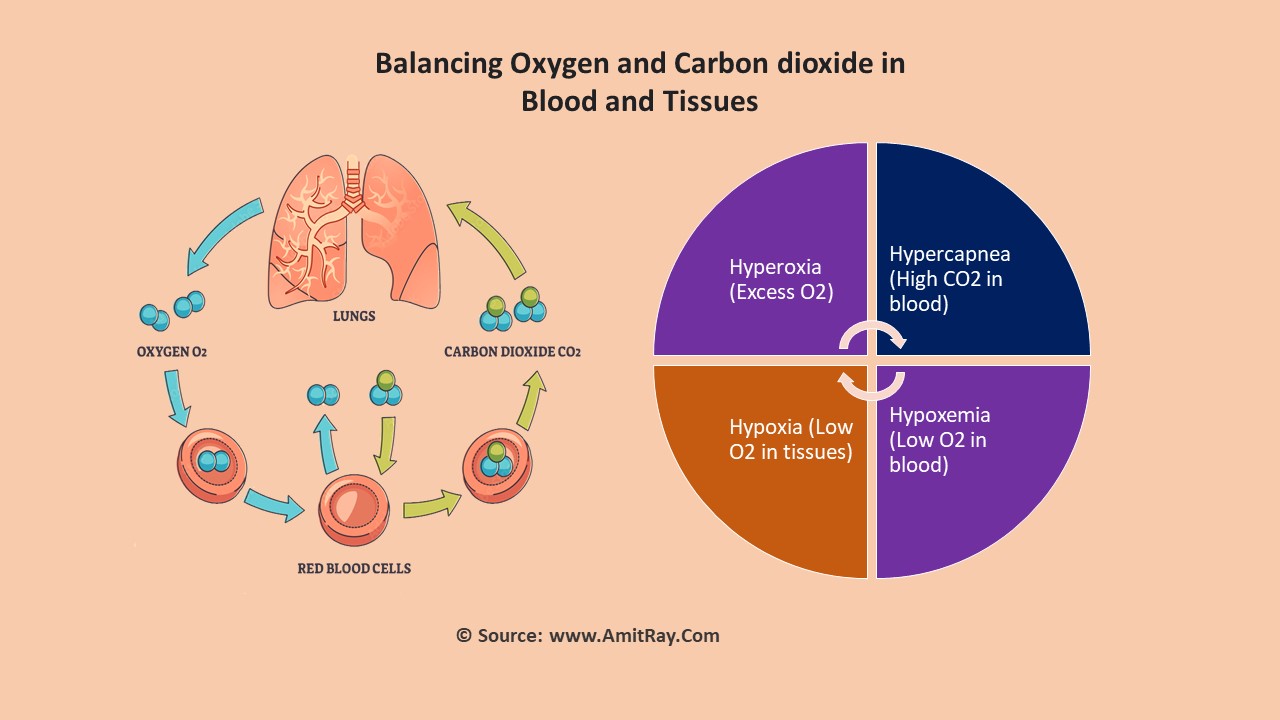
During the process of respiration, the transportation of oxygen within the bloodstream primarily involves red blood cells (RBCs) and their key component, hemoglobin. Hemoglobin, a pigment present in RBCs, imparts the characteristic red color to blood. Approximately 97% of the oxygen is transported by binding with hemoglobin in the RBCs, while the remaining 3% dissolves directly in the plasma.
The binding of oxygen to hemoglobin results in the formation of oxyhemoglobin. This binding process is influenced by several factors, including the partial pressures of oxygen and carbon dioxide, H+ concentration, and temperature. Specifically, the ideal conditions for the formation of oxyhemoglobin include a suitable partial pressure of oxygen, low H+ concentration, and a lower temperature. These conditions are typically met in the pulmonary alveoli, where oxygen exchange occurs during breathing.
Each hemoglobin molecule has the capacity to carry up to four oxygen molecules, forming a stable and reversible complex. The oxyhemoglobin complex serves as the vehicle for oxygen transport within the bloodstream, ensuring efficient delivery to tissues throughout the body.
Oxygen Transport to the Tissues:
In the alveoli, where oxygen uptake is optimal, the formed oxyhemoglobin is crucial for efficient oxygen transport. However, as blood circulates through the body and reaches the tissues, the environmental conditions change. In tissues, the partial pressure of oxygen decreases, and the concentration of carbon dioxide, H+, and temperature may increase. These altered conditions lead to the dissociation of oxygen from the oxyhemoglobin complex.
The dissociated oxygen is then released and diffuses into the surrounding tissues, providing the necessary oxygen for cellular respiration and energy production. On average, every 100 mL of blood oxygenated at the lung surface has the capacity to deliver approximately 5 mL of oxygen to the tissues. This dynamic process ensures a continuous and regulated supply of oxygen to meet the metabolic demands of various tissues and organs throughout the body.
Carbon Dioxide Dynamics and Respiration
The balance between carbon dioxide production in the tissues and its elimination in the lungs is a crucial aspect of respiratory physiology. This process involves a dynamic equilibrium that ensures the body maintains appropriate levels of carbon dioxide, a waste product of cellular metabolism.
- Tissue Production:
- During cellular metabolism, tissues generate carbon dioxide as a byproduct.
- The production of carbon dioxide is influenced by various factors, including the type and rate of cellular activities.
- Transport in the Blood:
- Carbon dioxide produced in the tissues is transported in the bloodstream in various forms, such as carbamino-hemoglobin and bicarbonate.
- Bicarbonate Formation:
- In the tissues, carbon dioxide combines with water in the presence of the enzyme carbonic anhydrase, forming bicarbonate ions and hydrogen ions.
- Bicarbonate Transport:
- Bicarbonate, a stable form of carbon dioxide, is transported in the plasma to the lungs through the circulatory system.
- Alveolar Exchange:
- In the alveoli of the lungs, where oxygen is in high concentration, carbon dioxide is released from bicarbonate through a reverse reaction facilitated by carbonic anhydrase.
- Exhalation:
- The released carbon dioxide is expelled from the body during exhalation.
- Quantitative Regulation:
-
- The body regulates the amount of carbon dioxide produced in the tissues to maintain a balance with its elimination in the lungs.
- Various physiological mechanisms, including respiratory rate and depth, adjust to meet the metabolic demands and maintain appropriate carbon dioxide levels.
This intricate process reflects a delicate equilibrium that ensures the body efficiently removes carbon dioxide, preventing its accumulation, which could lead to respiratory acidosis. The balance between production and elimination is essential for maintaining proper pH levels in the blood and supporting overall physiological function.
Respiratory Health: Hyperoxia, Hypoxemia, Hypoxia, and Hypercapnea
The respiratory system is a complex and vital component of human physiology, playing a crucial role in maintaining the balance of oxygen and carbon dioxide in the body. Four key terms associated with respiratory conditions are hyperoxia, hypoxemia, hypoxia, and hypercapnea. Let's delve into each term to understand their significance and implications on health.
Hyperoxia refers to a state of excess oxygen supply in tissues and organs, potentially leading to oxygen toxicity and oxidative stress. On the other hand, hypoxemia is characterized by a decrease in the partial pressure of oxygen in the blood, while hypoxia denotes reduced tissue oxygenation. Both conditions can arise from defects in oxygen delivery or utilization.
Hyperoxia:
- Definition: Hyperoxia refers to a condition where there is an excess supply of oxygen in tissues and organs.
- Causes: Hyperoxia can occur due to the administration of high concentrations of supplemental oxygen or exposure to environments with elevated oxygen levels.
- Consequences: While oxygen is essential for life, an excessively high level of oxygen can lead to oxygen toxicity. This can result in the enhanced formation of reactive oxygen species (ROS), contributing to oxidative stress. Oxidative stress can damage cells and tissues and is associated with various health conditions.
Hypoxemia:
- Definition: Hypoxemia is a condition characterized by a lower-than-normal partial pressure of oxygen in the blood.
- Causes: Hypoxemia can result from various factors, including respiratory disorders, heart conditions, high altitudes, or inadequate oxygen intake.
- Consequences: Inadequate oxygen in the blood can lead to insufficient oxygen delivery to tissues and organs, potentially causing symptoms such as shortness of breath, confusion, and cyanosis (bluish discoloration of the skin and mucous membranes). Chronic hypoxemia can contribute to the development of conditions like pulmonary hypertension and heart failure.
Hypoxia:
-
- Definition: Hypoxia is a condition characterized by reduced levels of oxygen in the tissues.
- Causes: Hypoxia can result from a variety of factors, including inadequate oxygen intake, impaired oxygen delivery (as in the case of circulatory problems), or defective utilization of oxygen by the tissues.
-
Types of Hypoxia:
- Hypoxic Hypoxia: Caused by low oxygen levels in the air, such as at high altitudes.
- Anemic Hypoxia: Caused by a reduced oxygen-carrying capacity of the blood, as seen in conditions like anemia.
- Ischemic Hypoxia: Caused by inadequate blood flow, limiting the delivery of oxygen to tissues.
- Histotoxic Hypoxia: Caused by the inability of cells to utilize oxygen effectively, often due to toxins or metabolic disturbances.
- Consequences: Hypoxia can have severe consequences on cellular function and can lead to cell damage or death if prolonged. It is a common factor in various medical conditions, including stroke, heart attack, and respiratory disorders.
In summary, hyperoxia refers to excess oxygen in tissues, hypoxemia is a low level of oxygen in the blood, and hypoxia is a condition of reduced oxygen in the tissues. Understanding these terms is crucial for assessing and managing oxygen-related issues in medical and physiological contexts.
Carbon Dioxide: Hypercapnia and its Implications
In the intricate dance of respiratory gases, carbon dioxide (CO2) plays a crucial role. Hypercapnia, the buildup of CO2 in the bloodstream, alters the pH balance of the blood, making it more acidic. Acute hypercapnia, marked by a sudden rise in CO2, poses additional dangers as the kidneys struggle to cope with the spike. This imbalance can have profound consequences on health, underscoring the need for a harmonious equilibrium between oxygen and carbon dioxide.
Antioxidants: Nature's Defense Against Oxidative Stress
Modern research has unveiled the role of antioxidants in controlling oxidative stress. Antioxidants, whether derived from diet or supplements, act by interrupting the propagation of free radicals or inhibiting their formation. This ability to counteract oxidative stress holds promise in improving immune function, increasing healthy longevity, and potentially preventing the onset of diseases associated with excessive oxidative stress.
Balanceing Oxygen, Carbon Dioxide, and Antioxidants:
Maintaining a delicate balance between oxygen, carbon dioxide, and antioxidants is crucial for modern health. This equilibrium not only serves as a defense against viruses but also addresses the challenges posed by an overstimulated lifestyle. The integration of ancient breathing wisdom, such as resistance pranayama, with contemporary knowledge about antioxidants provides a holistic approach to achieving this balance.
Conclusion
Oxygen, essential for life, poses a paradox that has become increasingly evident in the context of oxidative stress and its associated health implications. The ancient practice of pranayama, particularly resistance pranayama, offers a potential pathway to mitigate the adverse effects of excessive oxygen intake. By harmonizing the delicate dance between oxygen and other respiratory gases, these ancient breathing exercises may contribute to reducing oxidative stress and promoting overall well-being.
In the face of modern challenges, including the overstimulation of lifestyle and the threat of diseases linked to oxidative stress, embracing both ancient wisdom and contemporary research may pave the way for a more balanced and resilient approach to health. As we continue to unravel the mysteries of oxygen and its impact on our well-being, the integration of mindful breathing practices and antioxidant-rich lifestyles holds promise for a healthier and more harmonious future.
References
- Bitterman H. Bench-to-bedside review: oxygen as a drug. Crit Care. 2009;13(1):205.
- West JB, Luks AB. West’s pulmonary pathophysiology: the essentials 9th ed. Philadelphia: Wolters Kluwer; 2017.
- Capilupi MJ, Kerath SM, Becker LB. Vagus Nerve Stimulation and the Cardiovascular System. Cold Spring Harb Perspect Med. 2020 Feb 3;10(2):a034173. doi: 10.1101/cshperspect.a034173. PMID: 31109966; PMCID: PMC6996447.
- Hall J. Guyton and Hall Textbook of Medical Physiology. 13th ed. Philadelphia: Elsevier; 2016.
- Samanta D, Prabhakar NR, Semenza GL. Systems biology of oxygen homeostasis. Wiley Interdiscip Rev Syst Biol Med. 2017;9(4):e1382.
- Semenza GL. Oxygen homeostasis. Wiley Interdiscip Rev Syst Biol Med. 2010;2(3):336–61.
- Wang GL, Jiang BH, Semanza GL. Hypoxia-inducible factor 1 is a basic-helix-loop-helix-PAS heterodimer regulated by cellular O2 tension. Proc Natl Acad Sci U S A. 1995;92(12):5510–4.
- Prabhakar NR, Semenza GL. Oxygen sensing and homeostasis. Physiology (Bethesda). 2015;30(5):340–8.
- Semenza GL, Prabhakar NR. The role of hypoxia-inducible factors in carotid body (patho) physiology. J Physiol. 2018;596(15):2977–83.
- Iturriaga R, Oyarce MP, Dias ACR. Role of carotid body in intermittent hypoxia-related hypertension. Curr Hypertens Rep. 2017;19(5):38.
- Semenza GL, Prabhakar NR. The role of hypoxia-inducible factors in oxygen sensing by the carotid body. Adv Exp Med Biol. 2012;758:1–5.
- Ince C, Mik EG. Microcirculatory and mitochondrial hypoxia in sepsis, shock, and resuscitation. J Appl Physiol (1985). 2016;120(2):226–35.
- Shoemaker WC, Appel PL, Kram HB, et al. Temporal hemodynamic and oxygen transport patterns in medical patients. Septic shock. Chest. 1993;104(5):1529–36.
- Ince C, Ashruf JF, Avontuur JA, et al. Heterogeneity of the hypoxic state in rat heart is determined at capillary level. Am J Phys. 1993;264(2 Pt 2):H294–301.
- Nelson LD. Dysoxia and "dat" oxia: where does the oxygen go? Crit Care Med. 1999;27(7):1400–1.
- Robin ED. Special report: dysoxia. Abnormal tissue oxygen utilization. Arch Intern Med. 1977;137(7):905–10.
- Creery D, Fraser DD. Tissue dysoxia in sepsis: getting to know the mitochondrion. Crit Care Med. 2002;30(2):483–4.
- Ince C. The microcirculation is the motor of sepsis. Crit Care. 2005;9(Suppl 4):S13–9.
- Brooks GA. Cell-cell and intracellular lactate shuttles. J Physiol. 2009;587(Pt 23):5591–600.
- Brooks GA. Intra- and extra-cellular lactate shuttles. Med Sci Sports Exerc. 2000;32(4):790–9.
- Brooks GA. The science and translation of lactate shuttle theory. Cell Metab. 2018;27(4):757–85.
- Thomson L, Paton J. Oxygen toxicity. Paediatr Respir Rev. 2014;15(2):120–3.
- Jenkinson SG. Oxygen toxicity. J Intensive Care Med. 1988;3(3):137–52.
- Nishimura M. High-flow nasal cannula oxygen therapy in adults. J Intensive Care. 2015;3(1):15.
- Nishimura M. High-flow nasal cannula oxygen therapy in adults: Physiological benefits, indication, clinical benefits, and adverse effects. Respir Care. 2016;61(4):529–41.
- Nathan C. Immunology: oxygen and the inflammatory cell. Nature. 2003;422(6933):675–6.
- Brill SE, Wedzicha JA. Oxygen therapy in acute exacerbations of chronic obstructive pulmonary disease. Int J Chron Obstruct Pulmon Dis. 2014;9:1241–52.
- Aboab J, Jonson B, Kouatchet A, et al. Effect of inspired oxygen fraction on alveolar derecruitment in acute respiratory distress syndrome. Intensive Care Med. 2006;32(12):1979–86.
- Magnusson L, Spahn DR. New concepts of atelectasis during general anaesthesia. Br J Anaesth. 2003;91(1):61–72.
- Edmark L, Kostova-Aherdan K, Enlund M, et al. Optimal oxygen concentration during induction of general anesthesia. Anesthesiology. 2003;98(1):28–33.
- Benoît Z, Wicky S, Fischer JF, et al. The effect of increased FIO2 before tracheal extubation on postoperative atelectasis. Anesth Analg. 2002;95(6):1777–81.
- Pacher P, Beckman JS, Liaudet L. Nitric oxide and peroxynitrite in health and disease. Physiol Rev. 2007;87(1):315–424.
- Wright CJ, Dennery PA. Manipulation of gene expression by oxygen: a primer from bedside to bench. Pediatr Res. 2009;66(1):3–10.
- Davies KJ. Oxidative stress: the paradox of aerobic life. Biochem Soc Symp. 1995;61:1–31.
- Oyewole AO, Birch-Machin MA. Mitochondria-targeted antioxidants. FASEB J. 2015;29(12):4766–71.
- Helmerhorst HJ, Schultz MJ, van der Voort PH, et al. Bench-to-bedside review: the effects of hyperoxia during critical illness. Crit Care. 2015;19(1):284.
- Mackle D, Bellomo R, Bailey M, et al. ICU-ROX Investigators the Australian and New Zealand Intensive Care Society Clinical Trials Group. Conservative oxygen therapy during mechanical ventilation in the ICU. N Engl J Med. 2020;382(11):989–98.
- Barrot L, Asfar P, Mauny F, et al. LOCO2 Investigators and REVA Research Network. Liberal or conservative oxygen therapy for acute respiratory distress syndrome. N Engl J Med. 2020;382(11):999–1008.
- Rodríguez-González R, Martín-Barrasa JL, Ramos-Nuez Á, et al. Multiple system organ response induced by hyperoxia in a clinically relevant animal model of sepsis. Shock. 2014;42(2):148–53.
- Thomson AJ, Drummond GB, Waring WS, et al. Effects of short-term isocapnic hyperoxia and hypoxia on cardiovascular function. J Appl Physiol (1985). 2006;101(3):809–16.
- Modun D, Krnic M, Vukovic J, et al. Plasma nitrite concentration decreases after hyperoxia-induced oxidative stress in healthy humans. Clin Physiol Funct Imaging. 2012;32(5):404–8.
- Attaye I, Smulders YM, de Waard MC, et al. The effects of hyperoxia on microvascular endothelial cell proliferation and production of vaso-active substances. Intensive Care Med Exp. 2017;5(1):22.
- Orbegozo Cortés D, Puflea F, Donadello K, et al. Normobaric hyperoxia alters the microcirculation in healthy volunteers. Microvasc Res. 2015;98:23–8.
- Milstein DM, Helmers R, Hackmann S, et al. Sublingual microvascular perfusion is altered during normobaric and hyperbaric hyperoxia. Microvasc Res. 2016;105:93–102.
- Donati A, Damiani E, Zuccari S, et al. Effects of short-term hyperoxia on erythropoietin levels and microcirculation in critically ill patients: a prospective observational pilot study. BMC Anesthesiol. 2017;17(1):49.
- Rossi P, Tauzin L, Weiss M, et al. Could hyperoxic ventilation impair oxygen delivery in septic patients? Clin Physiol Funct Imaging. 2007;27(3):180–4.
- Barth E, Bassi G, Maybauer DM, et al. Effects of ventilation with 100% oxygen during early hyperdynamic porcine fecal peritonitis. Crit Care Med. 2008;36(2):495–503.
- He X, Su F, Xie K, et al. Should Hyperoxia Be Avoided During Sepsis? An Experimental Study in Ovine Peritonitis. Crit Care Med. 2017;45(10):e1060–7.
- Nagato AC, Bezerra FS, Lanzetti M, et al. Time course of inflammation, oxidative stress and tissue damage induced by hyperoxia in mouse lungs. Int J Exp Pathol. 2012;93(4):269–78.
- Altemeier WA, Sinclair SE. Hyperoxia in the intensive care unit: why more is not always better. Curr Opin Crit Care. 2007;13(1):73–8.
- Kallet RH, Matthay MA. Hyperoxic acute lung injury. Respir Care. 2013;58(1):123–41.
- Helmerhorst HJF, Schouten LRA, Wagenaar GTM, et al. Hyperoxia provokes a time- and dose-dependent inflammatory response in mechanically ventilated mice, irrespective of tidal volumes. Intensive Care Med Exp. 2017;5(1):27.
- Bhandari V, Elias JA. Cytokines in tolerance to hyperoxia-induced injury in the developing and adult lung. Free Radic Biol Med. 2006;41(1):4–18.
- Hesse AK, Dörger M, Kupatt C, et al. Proinflammatory role of inducible nitric oxide synthase in acute hyperoxic lung injury. Respir Res. 2004;5(1):11.
- Shimada I, Kubota A, Katoh M, et al. Hyperoxia causes diffuse alveolar damage through mechanisms involving upregulation of c-Myc/Bax and enhanced production of reactive oxygen species. Respir Investig. 2016;54(1):59–68.
- Makena PS, Luellen CL, Balazs L, et al. Preexposure to hyperoxia causes increased lung injury and epithelial apoptosis in mice ventilated with high tidal volumes. Am J Phys Lung Cell Mol Phys. 2010;299(5):L711–9.
- Liu WW, Han CH, Zhang PX, et al. Nitric oxide and hyperoxic acute lung injury. Med Gas Res. 2016;6(2):85–95.
- Schwingshackl A, Lopez B, Teng B, et al. Hyperoxia treatment of TREK-1/TREK-2/TRAAK-deficient mice is associated with a reduction in surfactant proteins. Am J Phys Lung Cell Mol Phys. 2017;313(6):L1030–46.
- Bailey TC, Martin EL, Zhao L, et al. High oxygen concentrations predispose mouse lungs to the deleterious effects of high stretch ventilation. J Appl Physiol (1985). 2003;94(3):975–82.
- Sinclair SE, Altemeier WA, Matute-Bello G, et al. Augmented lung injury due to interaction between hyperoxia and mechanical ventilation. Crit Care Med. 2004;32(12):2496–501.
- Tateda K, Deng JC, Moore TA, et al. Hyperoxia mediates acute lung injury and increased lethality in murine Legionella pneumonia: the role of apoptosis. J Immunol. 2003;170(8):4209–16.
- Kikuchi Y, Tateda K, Fuse ET, et al. Hyperoxia exaggerates bacterial dissemination and lethality in Pseudomonas aeruginosa pneumonia. Pulm Pharmacol Ther. 2009;22(4):333–9.
Saito K, Kimura S, Saga T, et al. Protective effect of procysteine on Acinetobacter pneumonia in hyperoxic conditions. J Antimicrob Chemother. 2013;68(10):2305–10.
- Baleeiro CE, Wilcoxen SE, Morris SB, et al. Sublethal hyperoxia impairs pulmonary innate immunity. J Immunol. 2003;171(2):955–63.
- Six S, Jaffal K, Ledoux G, et al. Hyperoxemia as a risk factor for ventilator-associated pneumonia. Crit Care. 2016;20(1):195.
- McNulty PH, King N, Scott S, et al. Effects of supplemental oxygen administration on coronary blood flow in patients undergoing cardiac catheterization. Am J Physiol Heart Circ Physiol. 2005;288(3):H1057–62.
- Farquhar H, Weatherall M, Wijesinghe M, et al. Systematic review of studies of the effect of hyperoxia on coronary blood flow. Am Heart J. 2009;158(3):371–7.
- Guensch DP, Fischer K, Shie N, et al. Hyperoxia exacerbates myocardial ischemia in the presence of acute coronary artery stenosis in swine. Circ Cardiovasc Interv. 2015;8(10):e002928.
- Muntean DM, Sturza A, Dănilă MD, et al. The role of mitochondrial reactive oxygen species in cardiovascular injury and protective strategiesx. Oxidative Med Cell Longev. 2016;2016:8254942.
- Llitjos JF, Mira JP, Duranteau J, et al. Hyperoxia toxicity after cardiac arrest: What is the evidence? Ann Intensive Care. 2016;6(1):23.
- Pilcher J, Weatherall M, Shirtcliffe P, et al. The effect of hyperoxia following cardiac arrest - A systematic review and meta-analysis of animal trials. Resuscitation. 2012;83(4):417–22.
- Roberts BW, Kilgannon JH, Hunter BR, et al. Association between early hyperoxia exposure after resuscitation from cardiac arrest and neurological disability: Prospective multicenter protocol-directed cohort study. Circulation. 2018;137(20):2114–24.
- Patel JK, Kataya A, Parikh PB. Association between intra- and post-arrest hyperoxia on mortality in adults with cardiac arrest: A systematic review and meta-analysis. Resuscitation. 2018;127:83–8.
- Shi SH, Qi ZF, Luo YM, et al. Normobaric oxygen treatment in acute ischemic stroke: a clinical perspective. Med Gas Res. 2016;6(3):147–53.
- Rincon F, Kang J, Maltenfort M, et al. Association between hyperoxia and mortality after stroke: a multicenter cohort study. Crit Care Med. 2014;42(2):387–96.
- Jeon SB, Choi HA, Badjatia N, et al. Hyperoxia may be related to delayed cerebral ischemia and poor outcome after subarachnoid haemorrhage. J Neurol Neurosurg Psychiatry. 2014;85(12):1301–7.
- Ding J, Zhou D, Sui M, et al. The effect of normobaric oxygen in patients with acute stroke: a systematic review and meta-analysis. Neurol Res. 2018;40(6):433–44.
- Cobley JN, Fiorello ML, Bailey DM. 13 reasons why the brain is susceptible to oxidative stress. Redox Biol. 2018;15:490–503.
- Calzia E, Asfer P, Hauser B, et al. Hyperoxia may be beneficial. Crit Care Med. 2010;38(10 Suppl):S559–68.
Read more ..